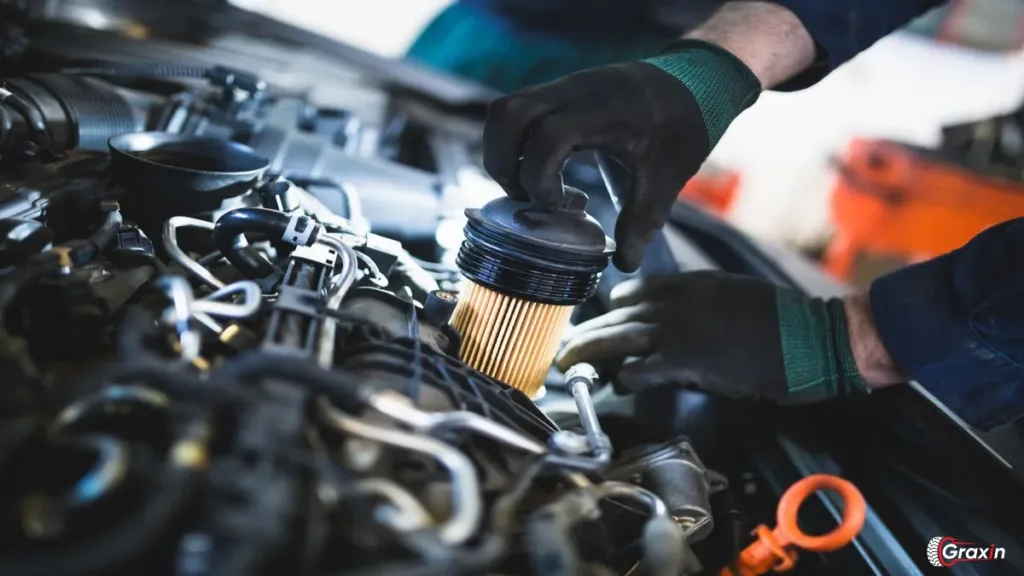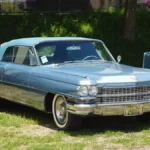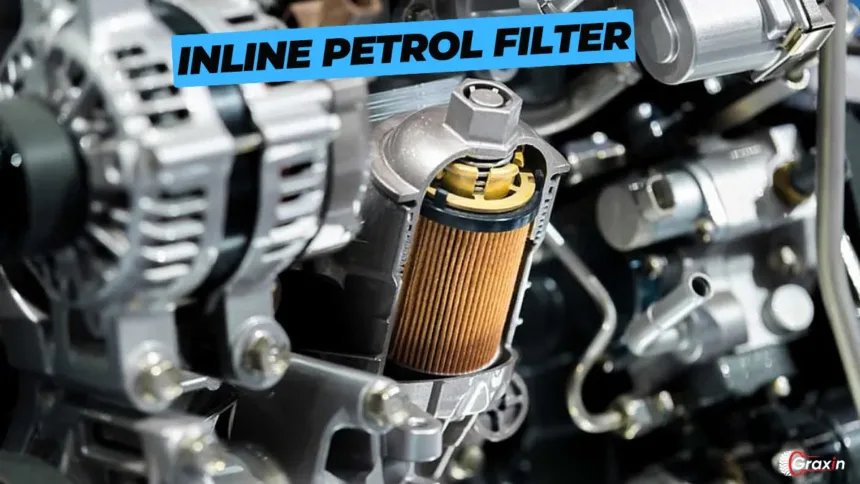Inline petrol filters might seem like a small, insignificant part of your vehicle’s fuel system, but they play a massive role in keeping your engine healthy. Without a quality fuel filter, debris, contaminants, and even small particles could make their way into the engine, causing damage, inefficiencies, and higher fuel consumption. Sounds pretty bad, right? Well, that’s why we’re here to dive into the nitty-gritty of inline petrol filters. Whether you’re a car enthusiast or someone who just wants their vehicle to run smoothly, you’ll want to stick around.
What is an Inline Petrol Filter?
Now, let me explain what an inline petrol filter really is. It sits between the fuel tank and the engine, cleaning the petrol of dirt, rust, and other products before they reach the engine. The major goal of such a filter is to allow only clean fuel into the combustion chamber and partly protect the engine from certain engine damage that could be caused by contaminated fuel.
Why Is It Called “Inline”?
It gets the name “inline” from where the filter is placed. It is fixed directly in the fuel line inside; hence, the name. In this way, each drop of fuel that moves from the tank to the engine is filtered efficiently. The placing thus makes it easy to service or replace, saving you from a headache later on.
How Does an Inline Petrol Filter Work?

How can something so small and important do this? As the name suggests, it involves something with filtration. Inside an in-line filter, there’s commonly some form of medium that can be a paper filter or sometimes something higher-end such as synthetic fibers or metal mesh. It works while allowing clean petrol to pass through when fuel passes through, catches impurities in the filter.
Step-by-Step Filtration Process:
- Fuel enters the filter: Petrol from the fuel tank moves through the fuel line towards the engine.
- Filtration begins: As the fuel passes through the filter media, any contaminants like dirt or rust are trapped.
- Clean fuel exits: The filtered fuel then moves on to the engine for combustion, free from any harmful impurities.
The Importance of an Inline Petrol Filter
Why should you care about a filter? Well, dirty fuel can wreak havoc on your vehicle. Here’s why maintaining a good inline petrol filter is vital:
- Protects the Engine: Without a filter, dirt and particles would make their way into the engine, causing wear and tear on components like the fuel injectors and cylinders.
- Improves Fuel Efficiency: Contaminated fuel can reduce fuel efficiency, making your car work harder to get the same output.
- Reduces Emissions: A cleaner engine burns fuel more efficiently, which in turn reduces harmful emissions.
- Extends Engine Life: By ensuring only clean fuel reaches the engine, an inline filter can help prolong the lifespan of your engine.
Signs of a Clogged Inline Petrol Filter
Like any part of a vehicle, an inline petrol filter can get clogged over time. So, how do you know when it’s time to replace it? Here are some common signs:
- Engine misfires: A clogged filter can prevent enough fuel from reaching the engine, causing misfires.
- Hard starts: If your car is having trouble starting, it could be because the fuel filter is clogged.
- Poor acceleration: A sluggish response when you press the accelerator is another common symptom.
- Engine stalling: The engine may suddenly stall if the fuel flow is heavily restricted.
How Often Should You Replace an Inline Petrol Filter?
That would probably be the most frequently asked question by owners of cars. Most manufacturers, on average, recommend that an inline petrol filter needs to be replaced every 20,000 to 40,000 miles. However, this can vary in different models of different brands and can also vary according to road/driving conditions.
If most of your driving is under adverse conditions-dusty roads, extremely hot weather-your filter may well need replacement more frequently. Similarly, if you always fill up at older and less reputable filling stations you may want to replace the filter more often, insofar as the fuel will more likely be contaminated.
Inline Petrol Filter vs In-Tank Fuel Filters
You might be wondering, “What’s the difference between an inline petrol filter and an in-tank fuel filter?” After all, many modern vehicles come equipped with in-tank filters.
- Inline Petrol Filter: As mentioned, this filter is placed directly in the fuel line between the fuel tank and engine, making it easy to access and replace.
- In-Tank Filter: Located inside the fuel tank, this filter is a bit trickier to access. In many cases, the fuel pump needs to be removed to replace it, making it a more labor-intensive job.
Basically, both types of filters do a similar job, but generally, the in-line ones are easier to service. Besides, it provides greater filtration, which becomes very helpful in those vehicles where there are greater chances of fuel contamination.
Types of Inline Petrol Filters

When it comes to inline petrol filters, not all are created equal. There are several types, each suited for different kinds of vehicles or driving conditions.
1. Paper Filters
Paper element filters are the most readily available type. Relatively inexpensive, light in weight and quite effective in filtering out most contaminants, they do however have the tendency to wear out fairly quickly and may not fared as well in extreme conditions.
2. Synthetic Filters
Synthetic filters use advanced materials like polyester or glass fibers. These filters last longer and are more resistant to clogging. They’re ideal for high-performance or off-road vehicles where dirt and debris are more common.
3. Metal Mesh Filters
Metal mesh filters are often reusable and are typically found in performance vehicles. They provide excellent filtration and can be cleaned rather than replaced, saving money in the long run.
Choosing the Right Filter for Your Vehicle
The proper type of inline petrol filter is selected according to different driving conditions, including the make and model of your car. Check your owner’s manual for recommendations, or consult a professional mechanic for advice on which will be best in your application.
How to Replace an Inline Petrol Filter
Replacing an inline petrol filter is a relatively straightforward job that can be done with a few basic tools. Here’s a step-by-step guide for the DIYers out there:
What You’ll Need:
- A new inline petrol filter
- A wrench or screwdriver (depending on your car)
- A container to catch any spilled fuel
- Gloves for safety
Step-by-Step Replacement:
- Locate the Filter: The inline petrol filter is usually located along the fuel line, either underneath the car or in the engine bay.
- Relieve the Fuel Pressure: Before you start, it’s essential to relieve the fuel pressure to avoid any fuel sprays. You can do this by removing the fuel pump fuse and running the engine until it stalls.
- Remove the Old Filter: Using a wrench or screwdriver, loosen the clamps or fittings holding the filter in place. Be sure to have your container ready to catch any spilled fuel.
- Install the New Filter: Place the new filter in the same orientation as the old one and tighten the clamps or fittings securely.
- Check for Leaks: Start the car and check for any leaks around the filter.
Replacing an inline petrol filter is usually a quick job, taking less than an hour for most vehicles. However, if you’re unsure or uncomfortable doing it yourself, it’s always a good idea to seek professional help.
Conclusion
Inline petrol filters are essential for maintaining a healthy, efficient engine. By filtering out impurities, they protect your engine, improve fuel efficiency, and reduce emissions. Regularly replacing or servicing your filter can save you from more costly repairs down the road. So, whether you’re a DIY enthusiast or prefer professional service, make sure your fuel filter gets the attention it deserves.
FAQs About Inline Petrol Filters
1. How do I know if my inline petrol filter is bad?
Common symptoms of a bad filter include engine misfires, hard starts, poor acceleration, and stalling. If you notice any of these, it’s worth checking or replacing your filter.
2. Can I clean my inline petrol filter?
Most inline petrol filters are disposable and should be replaced rather than cleaned. However, some performance filters, like metal mesh filters, can be cleaned and reused.
3. How long does it take to replace an inline petrol filter?
For most vehicles, replacing an inline petrol filter takes less than an hour. It’s a relatively simple process that can often be done with basic tools.
Also Read : Carburetor Diagram: Components and Functions Explained







